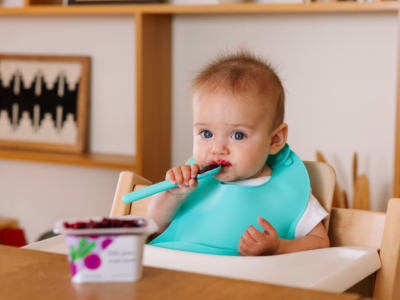Potty training is one of the biggest milestones in a toddler’s life thus far, which can bring some stress to both the parent and child. But it doesn’t have to be a tooth-pulling experience! We can make this journey a fun bonding experience between you and your child and sprinkle in some FUN!
There is a common misconception that we need to approach potty training from different angles when working with different anatomies. Are girls easier? Do boys potty train later? Should we potty train boys standing up or sitting down? So many questions! Ultimately it’s important to remember that while there are several differences (we’ll get into those below), overall it mostly comes down to the child’s personality and not their anatomy.
Here’s the lowdown:
When choosing the right potty training method for your child, the biggest factors to consider are your child’s personality and your family’s lifestyle. Is your toddler strong-willed? Does your toddler do well with a reward system? Does your family have a busy working lifestyle? These are all questions to consider before choosing the best method for your toddler and family.
Research does show us that potty training readiness typically begins a bit later for boys (American Academy of Pediatrics). Two population studies showed that boys often begin the process around 6 months later than girls. The reasoning behind this is of course generalized, but findings indicate that little boys are more physically active, making it a little more difficult to get them to read their body cues and connect them to their brain signals in those earlier months.
“Should we teach them to stand or sit to pee?” This answer is always the same – SIT! I know that may sound surprising, but here’s why. Though standing may seem easier from first glance, it can actually be more confusing for your little man. They would have to learn when it’s okay to poop and when it’s not. In the beginning, toddlers have very little awareness of their body’s functions and often confuse the feelings of needing to poop with needing to pee and vice versa. Teaching boys to sit for both pee and poop in the beginning will help to increase their confidence as they get the hang of connecting their brain signals to their body cues. As your child becomes comfortable and consistent with peeing and pooping on the potty, you can introduce standing to pee IF you want to.
Here are several reasons why sitting is better than standing:
- Safety: Little boys are often too short to pee into the toilet without using a step stool. Standing to pee and trying to aim and keep their balance all at the same time is a lot for a tot to juggle.
- Confusion: Keeping the steps to potty training as simple as possible will help your child be as successful as possible.
- Less mess: Sitting on the potty will make it much easier for your little boy to hit the target, and you can save yourself a few more months of wiping pee from every surface of your bathroom (you’re welcome!)!
One potty training aspect that is especially important for little girls to work on is wiping. It is imperative to teach little girls to wipe from front to back (they’ll likely need your help for a good while!). This will keep their private parts clean and healthy. We want to avoid bacteria entering the urinary track which can lead to painful infections.
When comparing different aspects of potty training, it comes down to personality and interests more than anatomy. Each child has their own unique learning styles and preferences when beginning a new skill. Here are several aspects of potty training to focus on regardless of if you have a boy or a girl:
- Preparation: Let your kiddo help pick out potty training supplies like: a floor potty, toilet seat insert, and underwear.
- Choosing rewards: Figure out what your child loves the most in this world and use that as a reward to celebrate their successes with them! Add a little dash of verbal positive reinforcement too!
- Addressing accidents: Never scold or shame your kiddo for having an accident. We want to focus mainly on the successes. When accidents do happen you can say, “Remember, pee and poop belong in the potty!”.
Every child is completely different which is the beautiful part of parenthood! Watching our children learn, grow, and apply new skills that we’ve helped to teach them is a priceless journey to go through with them! If you let it, potty training can be one of the most memorable experiences between you and your toddler as you both develop new skills and abilities along the way.



